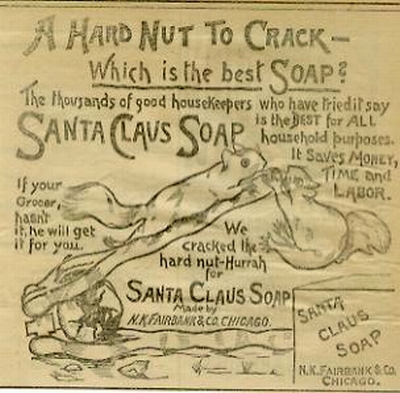Santa Claus Soap: The Pioneering 1880s Brand that Blended Quality and Festive Marketing

Santa Claus Soap was a popular brand of soap in the United States during the late 19th century, particularly in the 1880s. Manufactured by the N.K. Fairbank Company, it became well-known for its quality and extensive advertising campaigns. The soap was marketed as a high-quality product suitable for laundry and general household cleaning, appealing to the growing middle class of the time.

The advertising for Santa Claus Soap was particularly notable, utilizing vibrant and festive imagery of Santa Claus, which was relatively unique in the marketing landscape of that era. These advertisements often featured Santa Claus in a red suit, long before the character’s association with the color red became a standard through Coca-Cola’s later campaigns. The soap’s advertisements were found in magazines, newspapers, and on colorful trade cards, which were collectible and widely distributed.

The name “Santa Claus Soap” played on the popular and beloved figure of Santa Claus, evoking feelings of joy, trust, and cleanliness. The brand capitalized on the positive associations with Santa Claus, suggesting that their soap brought a touch of magic and purity to household chores.

The soap itself was praised for its effectiveness and was considered gentle yet efficient. It was made from high-quality ingredients that promised to deliver better results compared to other soaps available at the time. The success of Santa Claus Soap contributed to the N.K. Fairbank Company’s reputation as a leading manufacturer of consumer goods in the late 19th century.
Overall, Santa Claus Soap represents an interesting intersection of early consumer culture, advertising innovation, and the commercialization of a beloved cultural icon. Its legacy provides insight into the marketing strategies and consumer behaviors of the 1880s.
